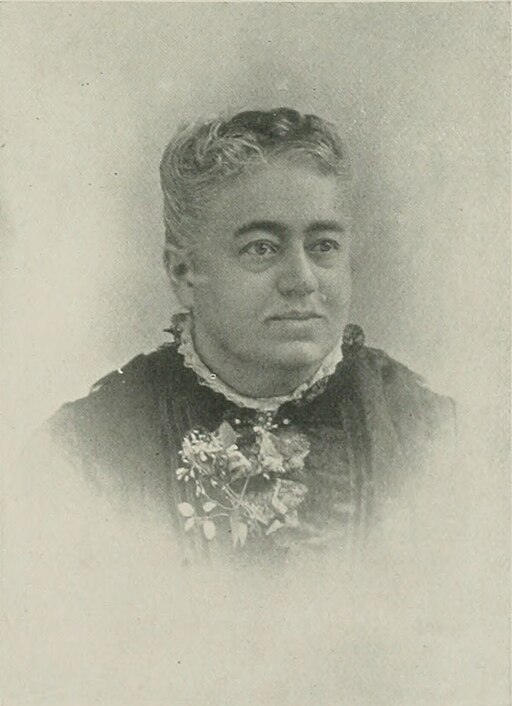Hymn History: The Wanderer’s Prayer & Author: Ellen Oliver Van Fleet
“From her mother she inherited domestic tendencies, together with an unswerving regard for duty. From her father she inherited a strong literary taste.”
(Wikisource)
The Origin of the Hymn “The Wanderer’s Prayer”
In the rich treasury of nineteenth-century American hymnody, “The Wanderer’s Prayer” occupies a special place as a song of repentance, yearning, and return. Though not as universally known as “Amazing Grace” or “Softly and Tenderly,” it has long been cherished in collections of revival hymns and camp-meeting songs. Its plaintive text and gentle melody capture the spiritual longing of the sinner who has strayed from God and now desires reconciliation. The story of its origin reflects the deep evangelical spirit of its time, a period when hymns were written not only to instruct the faithful but to call back those who had drifted away.
Context of the Hymn
The nineteenth century in America was an era of great religious fervor, particularly marked by the revivalist movements of the Second Great Awakening and their enduring influence. Hymns became one of the chief tools of evangelism, combining theological truth with heartfelt appeal. Songs were crafted to reach the emotions, to persuade the wayward to return, and to assure them of God’s mercy.
“The Wanderer’s Prayer” fits squarely within this tradition. As its title suggests, the hymn gives voice to one who has left the path of faith but feels the tug of conscience and the invitation of divine grace. Rather than speaking from the perspective of the steadfast believer, it embodies the repentant prodigal, echoing the biblical story of the lost son in Luke 15.
The Text and Its Author
The words of “The Wanderer’s Prayer” are generally attributed to nineteenth-century evangelical writers who specialized in devotional poetry and hymns for revival use. While attribution has sometimes varied across different hymnals, it is often linked to American compilers who included it in camp-meeting songbooks. What is clear is that the hymn’s text reflects the common themes of evangelical preaching: human wandering, divine mercy, and the hope of restoration.
The hymn’s structure resembles a prayer set to music. Its stanzas are confessional in tone, admitting weakness, straying, and unworthiness, while at the same time expressing trust in Christ’s willingness to forgive. The language is simple and heartfelt, meant to be easily understood by congregations and deeply felt by individuals struggling with guilt or longing for reconciliation.
Musical Setting
Like many revival hymns, “The Wanderer’s Prayer” was paired with a tune that emphasized its plaintive character. The melody is tender and reflective, often in a minor or subdued key, to mirror the sorrowful mood of the words. Yet the tune typically resolves on hopeful notes, reflecting the assurance of forgiveness.
This musical pairing was deliberate, as revival leaders knew the power of music to move the heart. The melody reinforces the hymn’s message: while sorrow over sin is real, the grace of God brings comfort and restoration.
Use in Revival Meetings
“The Wanderer’s Prayer” gained its popularity in the context of revival meetings and evangelistic services. It was often sung during times of invitation, when preachers urged those present to repent and return to Christ. The hymn’s confessional tone made it an ideal vehicle for expressing the feelings of those who were wrestling with conviction of sin.
Accounts from the late nineteenth century suggest that it was sung both by soloists, who could deliver its tender message with emotional force, and by congregations, who would join in the refrain as an expression of shared prayer. In both settings, it served to create an atmosphere of humility, repentance, and hope.
Themes of the Hymn
The central theme of “The Wanderer’s Prayer” is repentance and restoration. Its imagery recalls the biblical prodigal son, who returns home after squandering his inheritance, and the shepherd who seeks the one lost sheep. The hymn gives voice to the sinner’s cry for mercy, but it is equally a hymn of hope, affirming that God does not reject the penitent.
This balance of sorrow and assurance is key to its enduring appeal. It acknowledges the reality of human wandering without leaving the singer in despair, pointing instead to the unfailing mercy of Christ.
Legacy
Though it is less widely known today than in its revivalist heyday, “The Wanderer’s Prayer” continues to appear in hymnals and collections of sacred music. It is especially valued in traditions that preserve the camp-meeting and revivalist heritage. The hymn has also been appreciated for its devotional quality, serving as a private prayer for believers who feel the need to renew their commitment to Christ.
Related
Sorry, no records were found. Please adjust your search criteria and try again.
Sorry, unable to load the Maps API.
